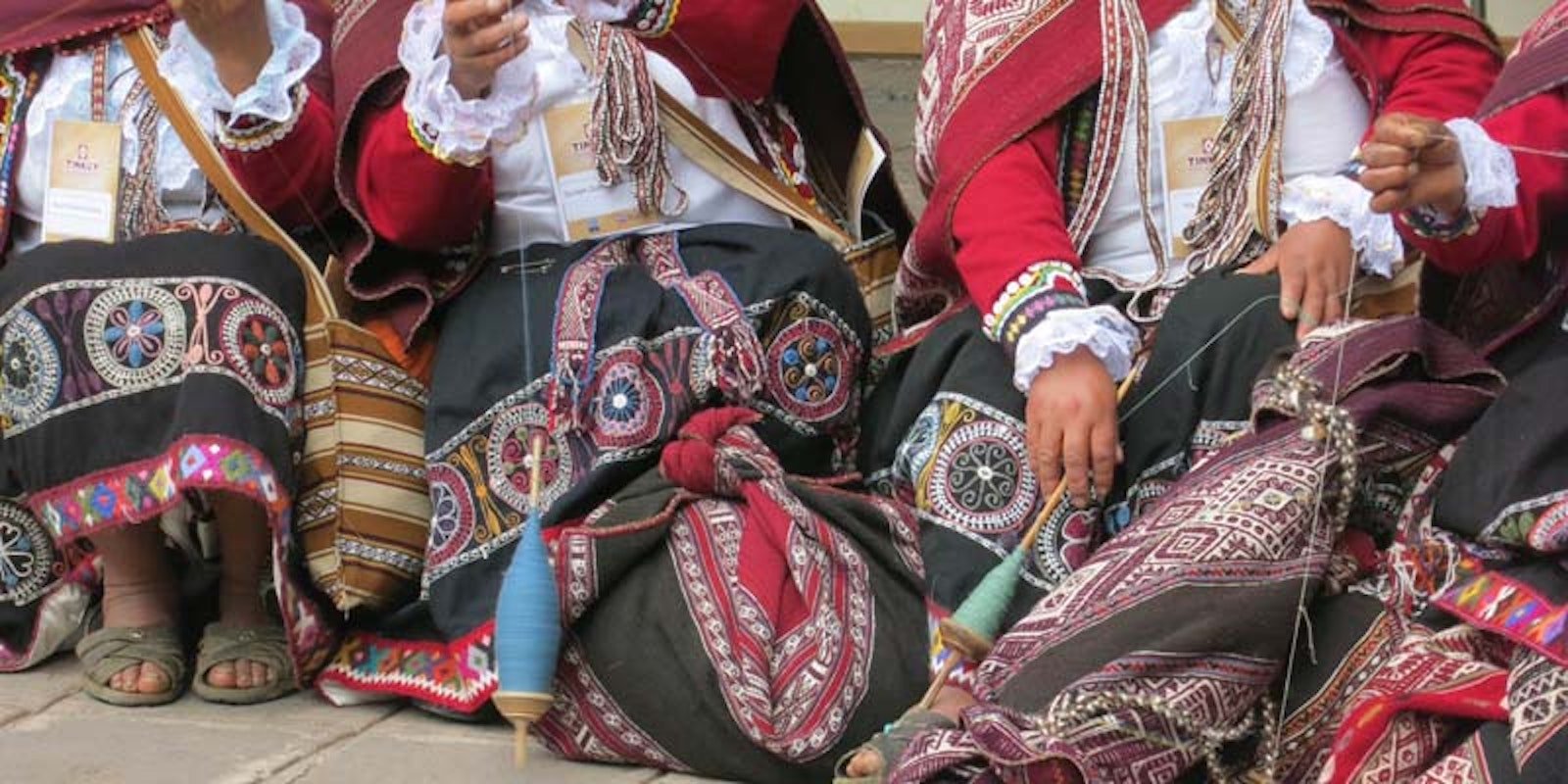It wasn't my first time in the Andes, that trip in 2005, but it was the first time I felt a real connection to the people and the incredible textile work being done throughout the region. I was on a tour sponsored by the Center for Traditional Textiles of Cusco (CTTC) and its North American support group, Andean Textile Arts (ATA). What a trip! We went to Machu Picchu and many of the other notable archaeological sites, we hung out in Cusco, but best of all, we visited weaving centers in the outlying villages. These ranged from nearby Chinchero to distant Accha Alta; from Chahuaytire to Pitumarca, where the ancient art of scaffold weaving has been revived (and where I got a special lesson from a very old weaver). We saw the first natural-dyed ikat warp in decades emerging from the cochineal dyepot in Santa Cruz de Sallac.

Making colorful warps is a communal activity in Santa Cruz de Sallac.
We were served traditional quinoa soup and, as a special treat, roasted guinea pig. (Tastes like squirrel.) We shared gifts of bread and coca leaves, we received smiles and thanks and heartfelt hugs. The weavers of the Andes are so openhearted, so eager to share their vast and ancient stores of textile knowledge. The woman who has been key to reviving the old techniques, to reintroducing the use of natural dyes, to creating viable markets for the splendid textiles of her people, is Nilda Callañaupa Alvarez, founder and director of CTTC.

In Accha Alta, men still weave traditional potato sacks of natural-colored llama fiber.
Nilda's video workshops Andean Spinning and Andean Knitting are available to download or stream.

